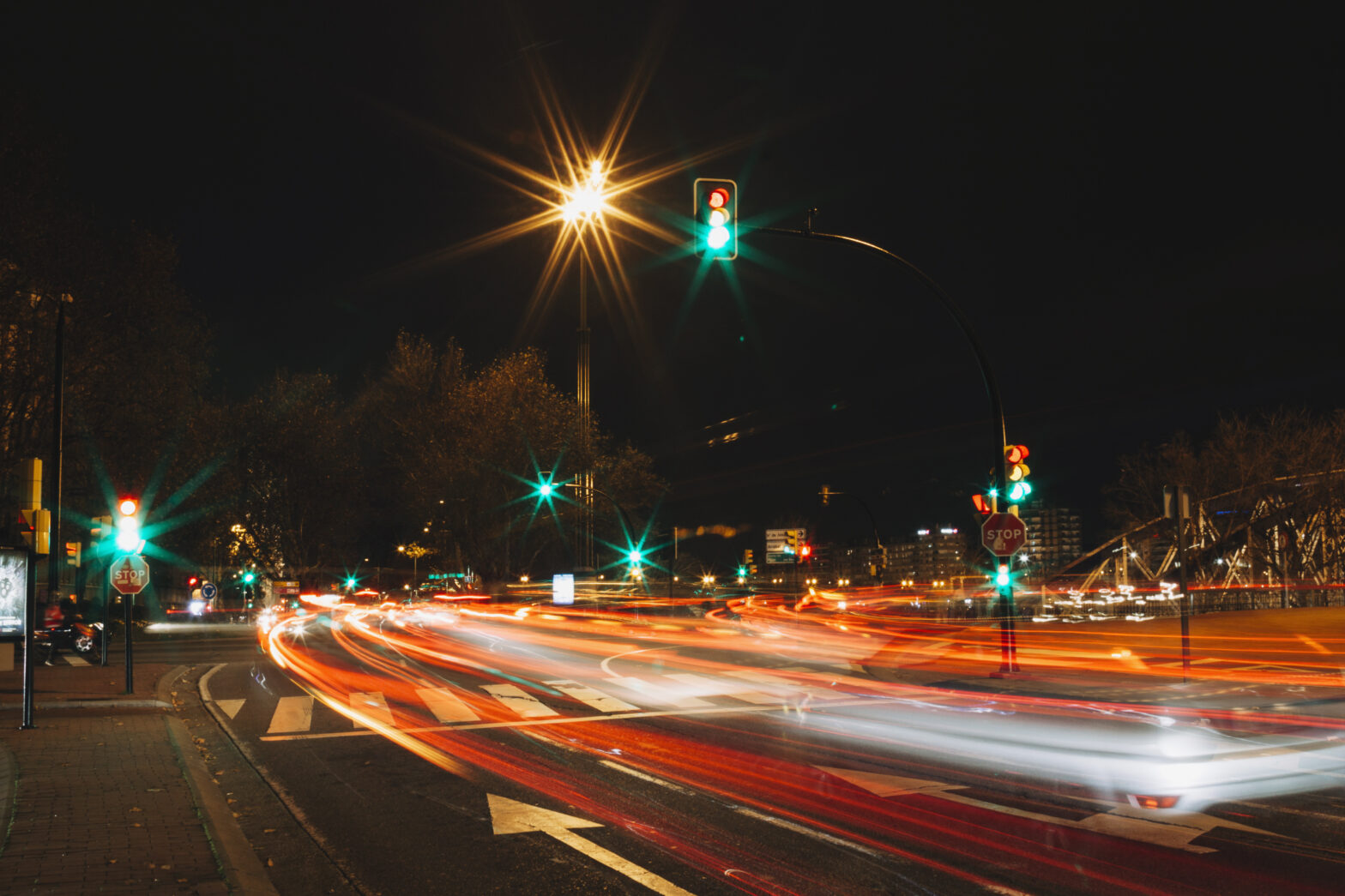Introduction
Improper lighting arrangements and low visibility have topped the list as major contributors to highway accidents. The numbers escalate further during foggy and misty weather when even the car’s headlamp fails to offer the required visibility.
Owing to this, several countries have implemented strict regulations and standards concerning highway lighting. Regular lamps cannot illuminate the dark roads of expressways. Rather, these artificial lights need to adhere to specific industry regulations for them to be used on highways. That being said, we have crafted a detailed walkthrough of expressway roadway illumination, design principles, regulation standards, and more facts.
What is highway lighting?
Highways, city roads, and expressways form the backbone of every urban settlement. If not appropriately equipped with amicable lighting arrangements, road accidents can never be reduced. This is where the concept of highway lighting comes into play! It defines the arrangement of artificial lights along the edge of the expressways or city roads to ensure proper illumination in all weather conditions. The main goal is to streamline traffic movements, especially at night when visibility is low.
Importance of highway lighting
Roadway illumination is just a way of improving the aesthetics of an urban settlement. However, that’s not the actual scenario. Although it is a significant part, highway lights have more detailed significance than just beautifying the roads.
Enhancements in road safety:
Proper illumination improves visibility. This allows drivers to spot lane markings and road signs easily, and obstacle detection becomes hassle-free.
Highway lights at intersections and crossings prevent pedestrian accidents.
Amicable lighting on city streets and highways allows drivers to focus properly on the roads, which is crucial for long journeys.
Improvement in traffic flow
Once the streets are adequately illuminated, drivers won’t have to slow down due to confusion about what lies ahead. This helps streamline traffic flow, especially on busy roads.
With highway lighting, drivers can maintain safe speed limits and prevent accidents.
Sharp and blind turns, tunnels, and intersections can have smoother traffic movements with bright illumination.
Support for emergency movements
Maintenance and construction work becomes more manageable with amicable highway lighting.
Ambulances and firefighter trucks can navigate on highways quickly with proper lights.
Key highway lighting standards and regulations
IES (Illuminating Engineering Society) guidelines:
These highway lighting standards set proper guidelines for:
- Illumination levels for different roads and streets, like freeways, pedestrian roads, local streets, and so on.
- Uniformity ratio for appropriate distribution of the lights so that sudden glares won’t interfere with visibility.
- Usage of cut-off techniques to prevent light spills.
- Prevention of over-illumination and control of light pollution in urban areas.
- Colour temperature range for higher road visibility and Color Rendering Index for easier spotting of objects and road signs.
- Mounting height and pole spacing of highway lights.
CIE (Commission Internationale de I’Eclairage) recommendations
CIE defines the global standards for highway lighting design and optimal usage. Some of the key recommendations are:
Classification of different roads based on pedestrian presence, traffic speed limit, and traffic volume. These are:
- M-Class: High-speed roads
- P-Class: Low-speed and pedestrian roads
- C-Class: Conflict zones like roundabouts and intersections
Illuminance level recommendations for different lighting classes
Lighting uniformity ratio and Threshold Increment for glare control
CCT and CRI for better visibility and seamless object detection
Sustainability in highway lighting solutions through adaptive lighting systems, motion-sensor street lamps, and solar-powered lamps
Types of highway lighting systems
High mast lighting
Tall poles with an approximate height of 30 to 50 meters are used in high mast highway lighting technique. Each pole is further reinforced with multiple floodlights, forming a cluster. It’s almost like creating an umbrella of lights on a single pole for widespread illumination. Only a smaller number of poles are required to cover the given stretch of road while maintaining uniform lighting. This technique is best suited for:
- Highways and expressways
- Toll plazas
- Roundabouts
- Interchanges
- Stadiums and building parking lots
- Ports and airports
Some of the key advantages of high mast lighting are:
A single cluster of floodlights can illuminate a widespread area. It reduces the dependency of multiple poles.
It uniformly distributes light, thereby preventing glares and blind spots.
Security in public places is enhanced greatly with high mast roadway illumination.
Streetlights on poles
Standard posts are used for streetlights, standing at a height of 9 to 15 meters only. Each pole can have one or two floodlights at the most. Both LED and conventional sodium vapour lamps can be used. Smaller highways and city roads are the most common areas where you can catch sight of this highway lighting type. Some of the key benefits are:
Short-heightened poles are easier to install and can be done quickly.
These are cost-effective and can save a lot of money.
Illumination offered is 24/7, with some lights having LDR technology for higher energy efficiency.
Tunnel lighting
This is a specialized highway lighting design used for bright and uniform illumination in underpasses and tunnels. It can be divided into three zones, namely:
Threshold or entering lights
Offers high brightness to match the outside conditions
Helps drivers adjust properly to the tunnel’s low light conditions while entering
Lights gradually start dimming as one proceeds along the tunnel for easy adjustability
Interior zone lighting
All the lights along the middle section of the tunnel maintain uniform illumination.
Clear vision is enhanced further by using medium-level brightness.
Dark and blind spots are reduced so that drivers can have complete visibility.
Egress or exit lighting
Its purpose is to help drivers adjust from low-light to brighter conditions.
This prevents a sudden shock to the visuals of the drivers.
Smart lighting
The use of LEDs in highway lighting helps save lots of energy and paves the way for sustainable urban development. Motion-sensitive and LDR technologies are often integrated so that the lights won’t remain on unnecessarily.
Highway lighting design considerations
Road type and traffic volume will influence the illuminance range of highway lighting.
High-speed roads should have a uniformity ratio of more than 0.4. On the contrary, pedestrian streets and city roads should have uniformity of more than 0.3.
Pole height and the gap between two adjacent poles should be considered. It will help prevent overlapping of illumination, sudden glares, and unnecessary blind spots.
It’s essential to consider the recommended glare threshold for highway lighting.
The choice of light source also plays a crucial role in highway lighting design. For instance, LEDs are more durable but can incur a higher upfront cost. HPS lamps are cheaper but have lower CRI levels
Conclusion
Most road accidents reported occur on highways and expressways. Although driver fatigue is a key reason, you cannot ignore the lighting conditions. That’s why investing in amicable highway lighting is essential for any urban settlement. It not only reduces road accidents but also offers more comfort and assurance to the drivers. Explore the different types of highway lights and their specifications for an accurate selection.
FAQs:
What is the best type of lighting for highways?
Since highways have longer stretches to be illuminated, high mast lighting is more suitable. It not only reduces the number of poles required but also offers uniform illumination. Dark spots and glares can be reduced further, especially at intersections.
In what ways do LED and traditional lamps differ?
These lamps have become prevalent for highway lighting. They are more energy-efficient and can last for years without requiring replacement.
Are there any regulations for highway lighting design?
The two significant protocols to be followed for designing and planning highway lighting are IES and CIE guidelines.
How can smart lighting reduce energy consumption?
The illumination range can be automatically adjusted using motion sensors. Lights will start glowing brightly for approaching vehicles, and on the contrary, departing vehicles will automatically dim the lamps. LDR lights can help control street lighting based on solar radiation intensity.

